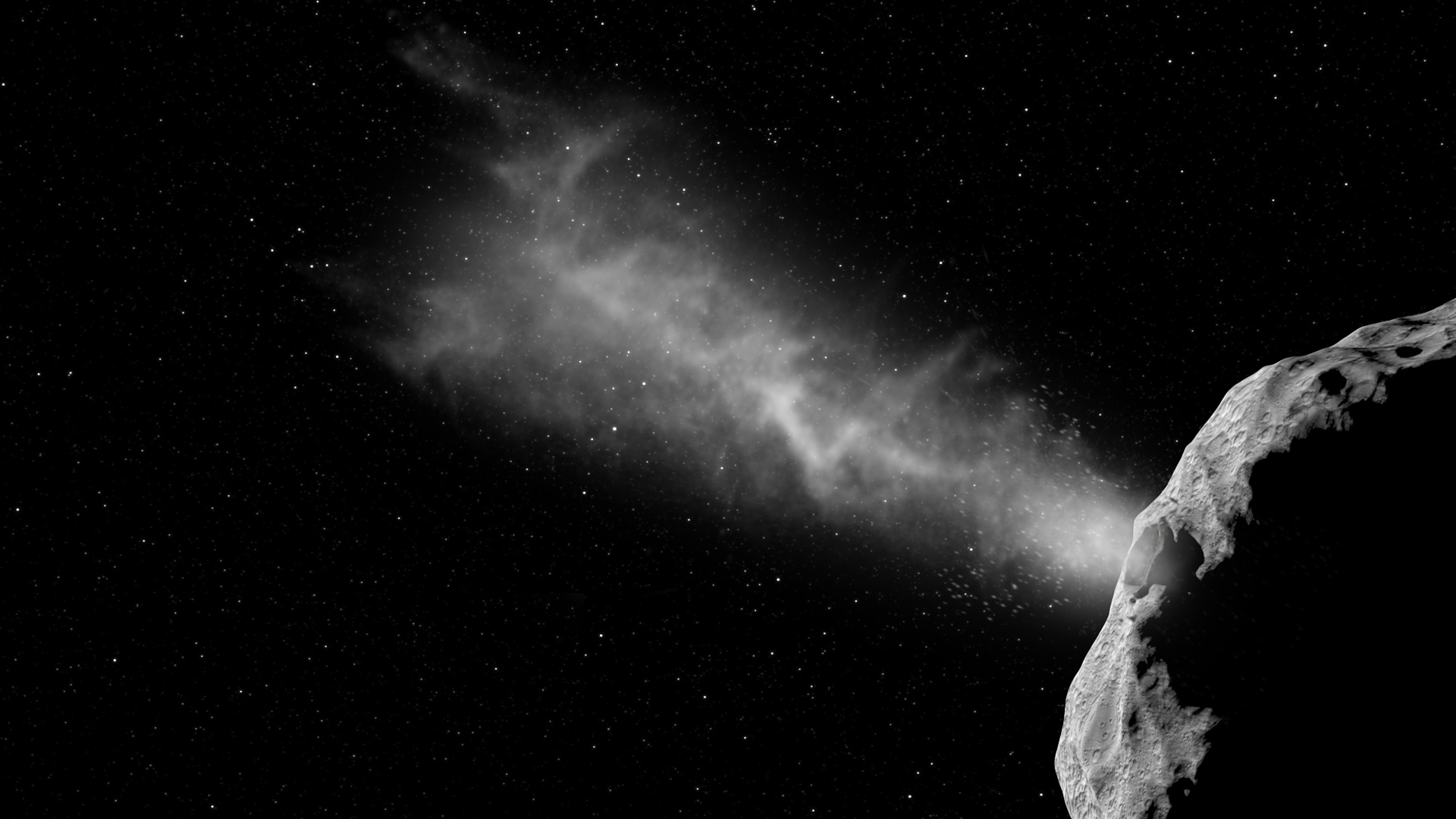When will we know how much DART changed the orbit of asteroid Dimorphos?
"It's like if you damaged your wristwatch and it would start running a little bit fast. You might not notice it in the first day or two."

All eyes will be on asteroid Dimorphos tonight (Sept. 26) as NASA's DART spacecraft slams into it with the goal of changing the asteroid's orbit around the larger space rock Didymos. But we will not know immediately whether or not the first-of-its-kind experiment succeeded? After the impact, all eyes will keep watching Dimorphos for several weeks, increasing the suspense of this mock apocalypse-averting exercise.
When observed from Earth, the Didymos-Dimorphos binary asteroid appears like a single tiny dot of light amid a star-studded sky. The dot periodically brightens and dims as the 525-foot-wide (160 m) asteroid moonlet Dimorphos moves around the larger, 2,560-foot-wide (780 m) Didymos, temporarily eclipsing it. It is from the frequency of these dips in brightness that astronomers have managed to accurately establish the orbital period of Dimorphos (11 hours and 55 minutes), and it is also from these dips that they will be able to calculate how much Dimorphos' orbit will have changed after the DART impact. The asteroid is expected to get pushed closer to Didymos, speeding up its orbital period by up to several minutes. But nobody knows when exactly this acceleration and subsequent orbital shortening will be observable .
Related: Why ground-based telescopes are key to DART asteroid-smashing mission's success
"It's like if you damaged your wristwatch and it started running a little bit fast," Tom Statler, the DART program scientist at NASA's Planetary Defense Coordination Office said in a European Space Agency's (ESA) news conference on Sept. 15. "You might not notice it in the first day or two, but after a few weeks, you will begin to notice that it's just not keeping the correct time anymore."
The catch is that the DART mission scientists have only a very rough idea how big of a change the impact will produce. That's because they know very little about Dimorphos. The effectiveness of the impact will depend to a large degree on the properties of Dimorphos that are not yet known — for example, the asteroid's density and internal structure (whether the asteroid is a single solid piece of rock or a conglomeration of boulders, sand and pebbles loosely bound by gravity). To be considered successful, DART must shave 73 seconds off of Dimorphos' orbital period, but some scientists think the result may be more like 10 minutes.
"The telescopes will be watching the timing of the eclipses, when Dimorphos goes in front of Didymos, as we see it from Earth," said Statler. "Within a few days or weeks, we would see that those start happening off-schedule. I personally would be surprised if a month went by and we did not have a clear detection of that change. But we can't say exactly."
According to ESA, ground-based telescopes will also be able to observe and measure the sudden brightening caused by the material ejected by the DART impact. This material will create a temporary comet tail of sorts that might help astronomers determine some of the properties of Dimorphos.
Get the Space.com Newsletter
Breaking space news, the latest updates on rocket launches, skywatching events and more!
"The more material ejected from the asteroid, the greater the amount of material available to reflect the sun's light and so the more it will increase in brightness in the sky," Dora Föhring, an astronomer at ESA's Near-Earth Object Coordination Center, said in the ESA statement. "It's the first time something like this has ever been tested, making it hard to predict just how much material will be released by the impact. Current estimates suggest it will increase in brightness by around a magnitude, but in the most extreme scenarios this could be as much as four."
The moment of impact will only be visible to telescopes in the southern and eastern parts of Africa, the eastern part of the Arabian Peninsula and in southeast Asia. Over the next weeks and days, hundreds of professional and amateur telescopes all over the world will aim at Didymos, including the two most powerful space-based observatories the James Webb Space Telescope and its predecessor the Hubble Space Telescope.
Follow Tereza Pultarova on Twitter @TerezaPultarova. Follow us on Twitter @Spacedotcom and on Facebook.
Join our Space Forums to keep talking space on the latest missions, night sky and more! And if you have a news tip, correction or comment, let us know at: community@space.com.

Tereza is a London-based science and technology journalist, aspiring fiction writer and amateur gymnast. Originally from Prague, the Czech Republic, she spent the first seven years of her career working as a reporter, script-writer and presenter for various TV programmes of the Czech Public Service Television. She later took a career break to pursue further education and added a Master's in Science from the International Space University, France, to her Bachelor's in Journalism and Master's in Cultural Anthropology from Prague's Charles University. She worked as a reporter at the Engineering and Technology magazine, freelanced for a range of publications including Live Science, Space.com, Professional Engineering, Via Satellite and Space News and served as a maternity cover science editor at the European Space Agency.










